Ryan Hall's Blog, page 205
November 2, 2016
I’m a Competitor: ESPN’s John Anderson
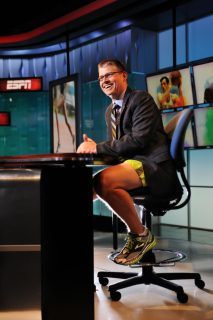
SportsCenter anchor John Anderson will be part of the ESPN2 broadcast of the Nov. 6 New York City Marathon. Photo: Peter Baker
When the ING New York City Marathon rolls through the five boroughs of the Big Apple on Nov. 6, John Anderson will play a big role in the broadcast duties on ESPN2. The longtime ESPN SportsCenter anchor is a former college high jumper who ran the 2010 edition of the race in 4:44:52 to support the Pat Tillman Foundation. Anderson will be joined by fellow Sage Steele and 13 nationally and locally recognized commentators, reporters and analysts.
ESPN2’s coverage of The ING New York City Marathon begins Sunday, Nov. 6, at 9 a.m. EST.In the NYC-area, you can watch the race on ABC7NY.com from 7 a.m. to 2 p.m. EST. The rest of the country (and for those who have video subscriptions from affiliated providers) can tune into WatchESPN from 9 a.m. to 12:30 p.m. Additional race coverage will also be streaming live on ESPN3 from 7 a.m. to 9 a.m. and 12:30 p.m. to 2 p.m., as well as a view of the finish line from 9:30 a.m. to 5 p.m. EST.
RELATED: How to Watch the 2016 New York City Marathon
How did your college track career at Missouri go?
I managed to get through an entire four-year career without ever scoring in a conference meet. I no-heighted at the Drake Relays in front of my family, one of the highlights of my career. Went there, missed three times, got my per diem and rode on the bus home.
My coach was a legendary guy named Bob Teel. We go to the first meet and he comes back from the coaches’ meeting and says, “OK men, tomorrow we’re starting at 6-8½” and I’m like, “Great. We’re going to start at my PR.”
We go to this first meet. First jump—Boom!—over the bar, I’m done. I’ve made the traveling team, I’ve made a height, didn’t matter, I had no chance of going higher. The guy who won jumped like 7-5. Afterward I went over to coach Teel and said, “I will never be that guy. I can be here for four years, and I don’t know what kind of potential I have, but I don’t have that potential. I know that right now.” So he said, “I’m going to tell you a dirty little coaching secret. All they ever tell you when you’re a kid is if you work hard, and you lift weights, and you run your sprints, and you eat right and get lots of sleep and do everything right you’ll win. Sometimes, the other guy is just better. Sometimes, the other guy just got more pixie dust. It’s not your fault. It’s OK, you can be a productive member of the team, sometimes you’ll be an asset, but even if you’re not scoring 10 points every meet, you’ll get a lot out of it.” And so he encouraged me to stay on, but it was a middling career.
I have a letter jacket, and I busted my hump to get that. You will not find me in the Missouri record books other than participation. But it was the greatest time I ever had; I had great teammates and went a lot of places. It was a wonderful experience.
Did you run much after college?
The second my college career ended, I said, “I’m not running again until the fire comes back.” About 15 years and 40 pounds later, the fire wasn’t coming back, but the cholesterol level was going up, so I started running again. A lot of times people ask, “What are you training for?” and I answer, “I’m training for my kids’ graduation so I can be here when they graduate from high school and college.”
How did you train for your first marathon in 2010?
I blew up my ankle once in college, so I can’t run more than 10 miles at a time. I figured if I could run eight miles, then walk one, three times during the race, I’d be home and it wouldn’t be awful.
Did that work out?
I got psyched up by the crowds and ran the first 19, then I had to walk. Then I ran again to 22, and by then my ankle was trashed, so I had to walk again. In the distance I could see the 23-mile sign, and at that point a guy in a banana suit comes running by me. I get that I was an athlete, I get that Pat Tillman gave his life for the country and I should have some sort of internal fortitude that should drive me, but it was the thought of my son seeing me lose to a guy in a banana suit that drove me to run to the finish.
How will your experience aid you in the marathon broadcast?
I have a relatability to the effort, that regardless of whether you’re in the first 10 or last 10, everyone’s got that same struggle, just to a different degree. Whether you’re trying to run 4:52 per mile or 14:52, you’re experiencing, to some degree, the same thing, mentally and physically, as everyone else.
What doesn’t running get more coverage in the media?
That’s one of the things that bothers me. It draws so well every four years, right? It’s one of the glamour events of the Olympics. Swimming, gymnastics, track and field–period. We saw more of track and field in the London Olympics than we did the men’s basketball team. And then it just dissipates in the background. I think that’s some of the backlash that Lolo Jones has to go through; “Oh, she didn’t medal.” Well that’s because you paid attention only every four years, but in the interim she’s been really good and won indoor world titles. I’m astonished as to why it’s not followed more closely in those down times. I wish I knew why, I wish I could help.
Running seems to be something that people would rather do than watch, whereas the average American is relegated by circumstance to be a spectator in most sports. Distance running hasn’t been able to make that viewership grab.
I can see where that’s hard. You look at a road race and there they go, and they are doing the same thing constantly, it doesn’t appear that the circumstances change. We’re talking about the coverage here…you know you get the mile splits, but if there was a way, maybe through GPS or tracking people, to see sort of the game within the game, when somebody at 17 says, “Let’s clip one off at 4:30 and see who’s with us.” And yet that’s so subtle to try to see in running, so you do fall into that, so visually it becomes the exact same thing. In New York there’s a lot of other stories you can do. Obviously we don’t want to lose sight of the leaders—the elite field is the major story—but over that length of time, two and a half, two hours and 10 minutes, you can take a break and explore other stories, other people, other elements of the race that I think hopefully broaden that spectator perspective.
A big criticism of past marathons on TV is that broadcasters have tried to “dumb it down” and interject human interest pieces, and worse, at a critical time. Any difference in EPSN’s approach or your philosophy in that regard?
How do you generally interest people without turning off the core audience who’s tuning in because they want to see it all and know the subtleties of what’s happening? Our production people seem to think there are elements of technology we can bring into it that will help with that. I think there will be some innovation, that’s what ESPN is known for, whether it’s the K Zone for a baseball game or what they come up with for the New York Marathon.
Do you think the relative lack of Americans among the elites in the marathon inhibits viewer interest?
No matter where the elites are from they’re all people and all those people have a story. If you can make them relatable, I don’t think it matters where they come from. I do think an American winning or being close is significant. I think when Meb won it was a big deal. I do think if you could have Americans competing at a high level it would boost the interest level for a while. I think all those people have great stories no matter where they’re from. It doesn’t seem to punish other sports as much. But there’s more familiarity with those guys because you seem them every day, or every week. Even the world’s best marathoners are running maybe three times a year, and two of those they might be in London or Berlin.
Is there anything you’re going to try to bring, individually and as a network, from covering major sports, to the marathon, maybe a different approach?
The idea is that we bring the appropriate size, not to make it bigger than it is, but so people realize how big it is, how significant it is. I think people in the marathon community understand it but I’m not sure the average viewer understands how significant the marathon is, in athletics in general.
Will you run another marathon?
I can see the marathon again some day in my future. But I read a great quote from Frank Shorter who said, “The key to running your next marathon is forgetting about your last one,” and since I haven’t forgotten about the last one yet, I’m not ready for the next one.
What are your favorite running highlights?
I ran an exhibition 100-meter race with Usain Bolt [on the ESPN campus]. Lost. Right afterward people were saying, “Dude, you just got dusted.” I’m like, “I don’t know if you’ve noticed, he dusts everybody in the world. As far as I see it I’m tied for second, no worse than everybody else.” And then in the marathon, since Haile Gebrselassie dropped out [of NYC], technically I beat him. I may have lost to Bolt, but I have beaten perhaps the world’s greatest distance runner in a marathon.
A shorter version of this interview appeared in the October 2012 issue of Competitor magazine.
The post I’m a Competitor: ESPN’s John Anderson appeared first on Competitor.com.
November 1, 2016
Molly Huddle Ready for Marathon Debut in New York
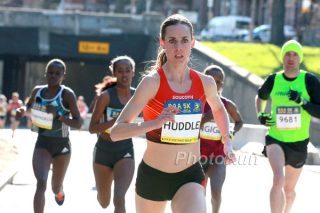
American Molly Huddle has been a dominant runner on the roads from the 5K to the half marathon. Photo: PhotoRun.net
When organizers of the TCS New York City Marathon have their eyes on an elite runner they want to run their race, they’ll often use what some have called the “Seduction Ride.” Riding along in one of the pace vehicles, the coveted athlete gets to experience all of the excitement of the five-borough run, with none of the attendant physical effort, and usually commits to debut at New York the following year. Molly Huddle, the pre-eminent American distance runner on the track, has taken that ride twice as the elite athlete recruiters have targeted her almost since the London Olympics ended four years ago.
On Sunday morning, that long courtship will come to fruition when Huddle, the American record holder of the 10,000 meters on the track, toes the start line in Fort Wadsworth on Staten Island, and finally tackles her first marathon.
RELATED: How to Watch the 2016 New York City Marathon
Huddle is no stranger to the streets of the Big Apple, having won the United New York City Half Marathon the past two years—her most recent 1:07:41 win set an American record for a women’s-only race by more than 50 seconds—and having raced there 15 other times. And while most might consider her métier to be on the synthetic oval, based on her 30:13.17 American record set this summer at the Rio Olympic Games she’s equally adept on the roads, having won seven U.S. titles on the macadam at distances from 5K to 20K.
“I’ve raced well on the roads, and on the roads in New York,” Huddle said. “I think I can handle that hilly, potholed, cross-country type course. That’s what a lot of people say is the challenge of New York. I think the 26.2 distance is what’s going to be the shocker.”
It’s impossible to predict what Huddle can run in her debut marathon, but her background and fitness suggest she’s probably capable of running in the 2:22 to 2:26 range if all goes well.(The fastest debut marathon by an American woman is 2:25:53, set by Kara Goucher in New York in 2008.) But the marathon is a different beast, especially at the elite level, and many variables can swing the outcome. Plus, Huddle’s buildup for her debut had to be somewhat shoehorned into the relatively short time between the Olympics and New York.
“I had to jump right into the buildup, and the focus was on not trying to cram too much in, but on hitting the workouts—long tempo runs and long runs–but not killing them, just getting the volume in,” Huddle said. “It’s pretty much the same workouts as I did in the winter the past two years. Kind of like half marathon training, but making the tempo run a couple miles longer and doing longer reps.”
In the past, Huddle’s longest runs have been 18 miles in two hours. “I needed to get that up by at least four miles, and treat the long run as a workout,” she said.
RELATED: 45 Reasons We Love the New York City Marathon
Like the most popular girl in high school before the prom, Huddle resisted the entreaties of the New York recruiters until she felt the time was right. “The Olympics was kind of the end of a four-year cycle,” she said “If anything were to go wrong with the marathon, if the training or the race beat me up too much, there’d be some time to recover before the next track season. Also, at my age, if I ever want to get serious about the marathon—in a perfect world maybe run it at the 2020 Olympic Trials—I should start now.”
It was probably never a question of if, but when Huddle would take on the marathon. Just as there was little, if any doubt, her debut would come in New York. Growing up in upstate New York’s Elmira she often watched the race on TV.
“I know a little about the legends there, and it’s definitely been in my mind for a long time,” she said. “If you’re going to run 26 miles you need to be excited about it and New York definitely gets me excited.”
Huddle remained typically coy about her goals, time or place-wise, for Sunday, but it’s clear she’d like more than just a finisher’s medal for her efforts. “Placing in the top three would be crazy,” she said. “I can’t even imagine what it would be like, that would make me feel like a marathoner and point the next four years of training that way. It would change everything.”
RELATED: The New York City Marathon Course in 26 Pictures
The post Molly Huddle Ready for Marathon Debut in New York appeared first on Competitor.com.
Olympic Triathlon Champ Gwen Jorgensen Eager to Run NYC Marathon
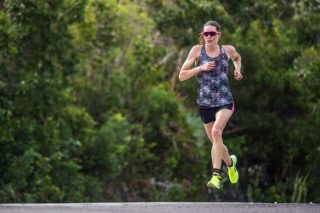
Gwen Jorgensen tuned up for the New York City Marathon with some fast 5K run splits during three days of competition at the Island House Invitational Triathlon on Oct. 28-30 in the Bahamas. Photo: Nils Nilsen/Island House Invitational Triathlon
Back in early October, triathlete Gwen Jorgensen put her bike and swim goggles aside for a day to enter the USA Track and Field 10-Mile Championships in Minneapolis-St. Paul.
It was an opportunity the St. Paul resident couldn’t ignore.
“I signed up for the (run) because it was literally in my backyard,” she said.
It was a challenging, hilly course with a stellar field, and nobody quite knew what to expect from Jorgensen. Just 50 days after winning gold at the Rio Olympics, would the 30-year-old swim-bike-run star be able to hang with top-flight runners such as Aliphine Tuliamuk-Bolton, Jordan Hasay, Sara Hall, Natosha Rogers and Lindsey Scherf?
The answer: absolutely.
Jorgensen went out strong with the lead pack and finished third in 53:13—about 5:19 pace per mile and just 24 seconds behind the winner, Hasay.
“I told myself I could go out with the leaders and just try to hold on,” Jorgensen said in a recent interview with Competitor. “I was shocked with how well I did.”
The race provided a glimpse of Jorgensen’s running talent and potential in the marathon, a distance at which she’ll make her debut on Sunday morning in New York City.
She certainly impressed Hall, the former Stanford star, U.S. cross-country champion and 2:30 marathoner who finished 20 seconds behind her in fourth.
“I think Gwen is going to do really well and surprise a lot of people,” Hall said. “She has a huge aerobic tank from the amount of time she spends training in her other events.”
Plus, said Hall, the up-and-down 10-mile course has some similarities to New York’s, which bodes well for her.
“I was really impressed by her,” Hall said. “She is such a competitor.”
Jorgensen may not have ever done a marathon before, but Hall is convinced everything she’s done up to this point will help.
“She has a lot of practice being competitive and executing over the course of a long race,” Hall said.
RELATED: How to Watch the 2016 New York City Marathon
“My marathon itch”
For Jorgensen, the marathon is a long-delayed goal, something she put on hold while working to become an Olympic triathlon champion. After blowing a tire on the bike at the 2012 London Games and finishing in a disappointing 38th place, Jorgensen was determined to do everything possible to win Olympic gold in Rio de Janeiro, and a marathon wasn’t part of that plan.
“I had a goal for four years that was very structured,” she said. “Every decision I made had to be calculated to see if it would help me in my goal of gold at Rio. During this four-year period I wanted to do a marathon, but knew the risk was too high, so I waited until after Rio to scratch my marathon itch.”
She’s increased her training runs since Rio, bumping up her long runs from 18K to 26K, and doing marathon-style workouts at least once a week for the last month. Before Rio she was running 31 to 43 miles per week. Lately she’s been doing 43 to 50.
But, she’s continued to train as a triathlete. In fact, her warm-up act for her marathon debut—while most others were tapering—was to win the three-day Island House Triathlon in the Bahamas Oct. 28-30. She won overall title of the event, running the fastest 5K splits (16:50-16:55) among women.
So, she sees herself as being “under prepared” for the marathon, but says that’s fine. She and coach Jamie Turner decided there was no point to completely change her training. She knows that’s an unconventional approach, but it feels right to her.
“I have zero expectations and that is awesome,” said Jorgensen, who’s been dominant at the Olympic triathlon distance in recent years, winning world championships in 2014 and ’15. “Usually I have goals and know what I want to accomplish, but the marathon is different. It is strictly for fun and without expectations or goals.”
She said she has too much respect for the marathon distance and the New York course to make any predictions for what kind of pace or time she’ll run.
That may be the case, but Olympic teammate and longtime friendly rival Sarah True can see Jorgensen surprising people on Sunday.
While True admits that stepping up to 26.2 miles will be a big challenge for Jorgensen, she believes in her fitness, drive and talent. Long before she was a triathlete, Jorgensen was a track and cross country All-America selection at the University of Wisconsin who won Big Ten championships in the 3,000 and 5,000 meters. True calls her “the most naturally gifted runner that women’s Olympic-distance triathlon has ever seen.”
“Gwen is strong, tough and passionate about performing well,” True said. “When she shows up on a race course, she’s always well prepared and gives everything she has. Gwen is capable of a great debut—I’d venture 2:30-2:35 if everything goes according to plan.
“I have no doubt that there will be some professional runners inspired to incorporate more swimming and biking into their training after seeing her performance,” True added.
RELATED: 45 Reasons We Love the New York City Marathon
Into “the unknown”
Jorgensen knows she’ll have to hold back in the marathon more than she did in the 10-Mile Championships. She says if she tries to go out too fast with the leaders as she did in Minneapolis-St. Paul, “I don’t think I can do that without paying at the end.”
“Every step over 10 miles will be a new experience,” she said.
So, she hopes to focus on proper fueling in the days before the race, store up some energy and start with a more conservative pace.
She’s wanted to do a marathon for years, so she intends to enjoy the whole experience: the city, friends and family and the huge crowds and race-day atmosphere.
“I hope there’s a lot of people out there screaming, ‘Go Gwen!’ ” she said Monday, in a teleconference with reporters from her home in Minnesota. “I’ll really need that help.”
Jorgensen said that even if she runs very well Sunday, the triathlon will continue to be her focus, and she’s planning to make the 2020 Olympics to defend her title. The only other goal at this point is to try to start a family with her husband.
While she’ll be a rookie marathoner come Sunday, she does point out that her event is an endurance race that takes nearly as long as a marathon. At Rio, she won in 1:56:16. On Sunday, she’ll likely be in the 2:30-2:40 range.
“My triathlons are around 2 hours and the marathon can be less than 3 hours, so I think I have some endurance built up from my triathlon training,” she said.
“It is a huge unknown, though. I am not sure if anything will carry over or if I’ll end up walking in the end. It’s all such a new experience and that is part of the fun. I like having the challenge and the unknown. It is so different for me than what I’m used to.”
RELATED: The New York City Marathon Course in 26 Pictures
The post Olympic Triathlon Champ Gwen Jorgensen Eager to Run NYC Marathon appeared first on Competitor.com.
A Glimpse Inside the NYC Marathon Course in 26 Pictures
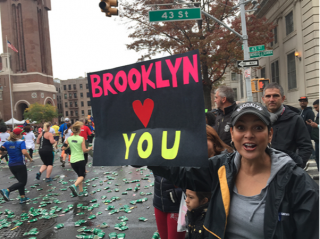
Running the New York City Marathon is a bucket-list dream for runners from around the world. And rightly so! It’s a great race, both because the ability to tour all five boroughs of the Big Apple on foot is an amazing opportunity and because, well, it’s New York City, and if you can make it there, you can make it anywhere! Here’s a glimpse at the course in photos, with some insights on what to expect when you’re running 26.2 miles from Staten Island to Central Park.
RELATED: 45 Reasons We Love the New York City Marathon
Photo Gallery
1 of {count}
Back to Start
View Larger Image
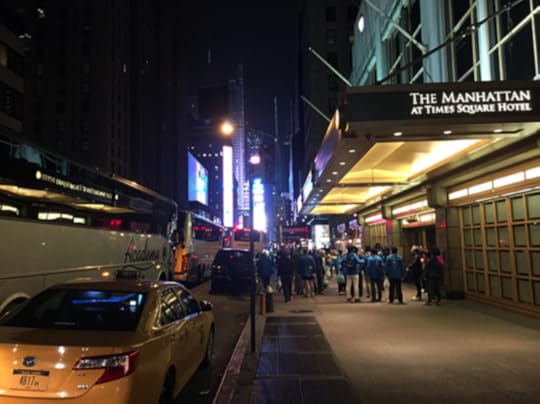
New York City Marathon Course in Pictures
Race morning starts with an early morning bus, subway or ferry ride to Staten Island for all 50,000 runners in the race. Photo: Steve Godwin
View Larger Image
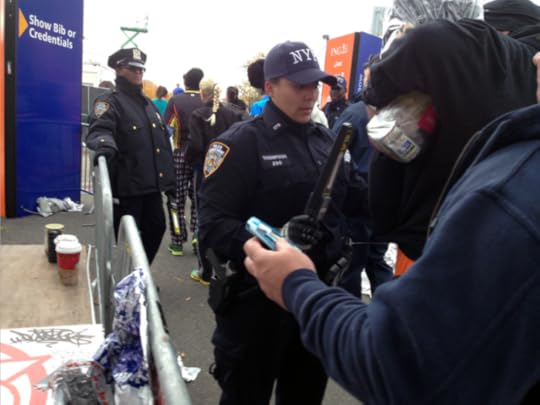
New York City Marathon Course in Pictures
Once on Staten Island, runners head to the athlete's village area, passing through security gates manned by New York City's finest. Photo: Brian Metzler
View Larger Image
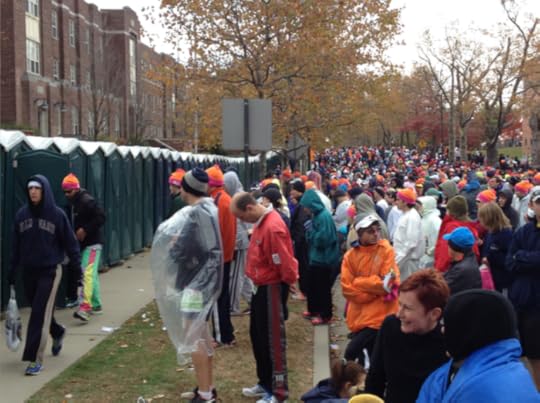
New York City Marathon Course in Pictures
Every good race starts with a line at the porta-potties, right? Although it seems a bit chaotic to the 50,000 runners who arrive by bus and ferry, the pre-race runner camp at the New York City Marathon is extremely well-organized. Photo: Brian Metzler
View Larger Image
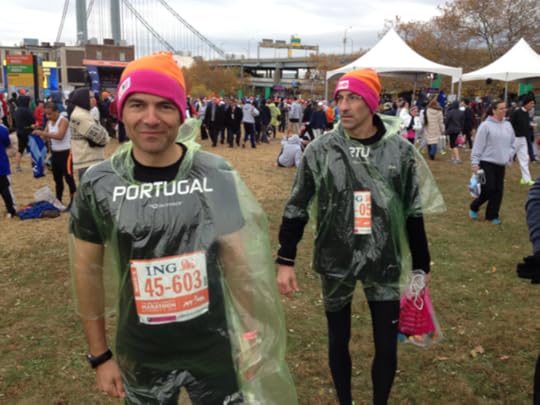
New York City Marathon Course in Pictures
The New York City Marathon has a large percentage of overseas participants so you're bound to bump into runners from dozens of different countries. Photo: Michael Proulx
View Larger Image

New York City Marathon Course in Pictures
Like any big marathon, half of the battle is staying warm and comfortable in the hours before you start.
View Larger Image

New York City Marathon Course in Pictures
In order to organize the many start waves, runners are lined up more than an hour before their start time. Photo: Brian Metzler
View Larger Image
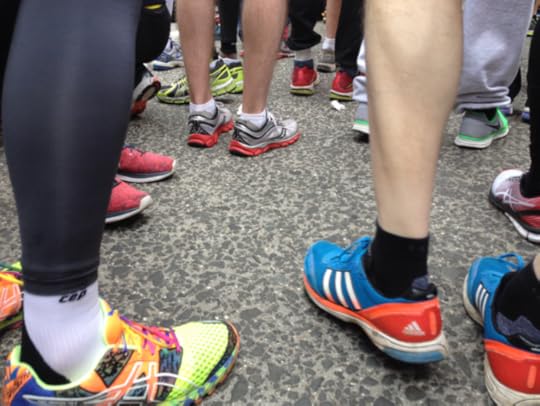
New York City Marathon Course in Pictures
A ground-level view shows dozens of different models of shoes on the feet of nervous runners. Photo: Brian Metzler
View Larger Image

New York City Marathon Course in Pictures
The New York City Marathon has perhaps the most dramatic start of any race in the world as runners immediately run over the 2-mile Verrazano-Narrows Bridge. Running on the top deck offers amazing views of Manhattan. Photo: Brian Metzler
View Larger Image

New York City Marathon Course in Pictures
Not all starting waves of runners get to run on the top deck of the bridge. It's less windy on the lower deck, but it's just as energetic. Photo: Steve Godwin
View Larger Image
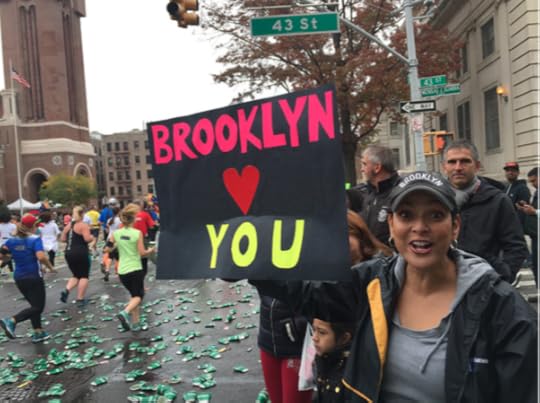
New York City Marathon Course in Pictures
Once off the Verrazano-Narrows Bridge, runners enter Brooklyn, the second borough of their journey. Photo: Michael Proulx
View Larger Image
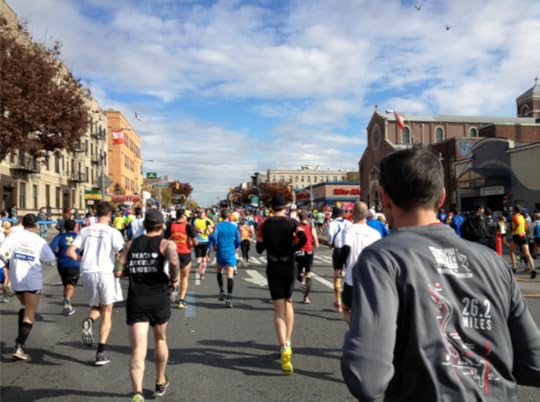
New York City Marathon Course in Pictures
When you enter Brooklyn near Mile 2, you're met with robust cheers from thousands of spectators. Suddenly you realize it's not just a fun spectacle, but a grueling 26.2-mile run. Photo: Brian Metzler
View Larger Image
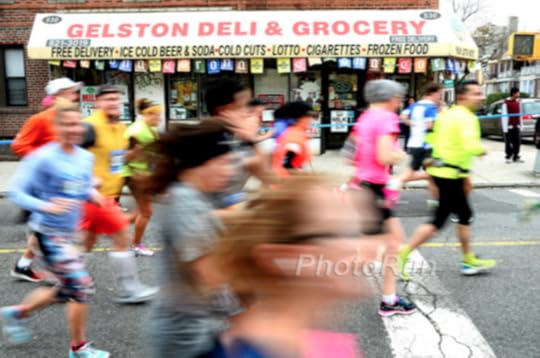
New York City Marathon Course in Pictures
Runners get a snapshot glimpse of everyday life in Brooklyn, New York's most populous borough. Photo: PhotoRun.net
View Larger Image

New York City Marathon Course in Pictures
If you find yourself in a rut in Brooklyn, there are plenty of signs that will give you a boost. Photo: Michael Proulx
View Larger Image
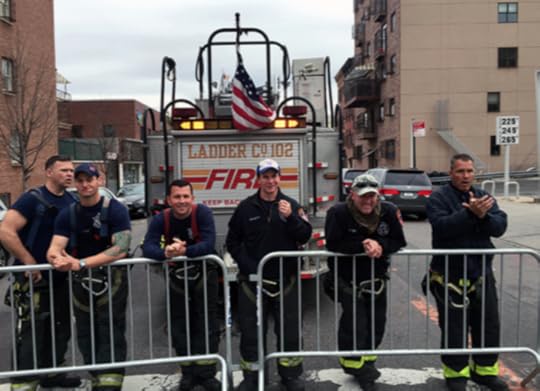
New York City Marathon Course in Pictures
When you pass through Brooklyn, be sure to give the guys from Ladder Co. No. 102 a high-five and a big thank you. Photo: Steve Godwin
View Larger Image
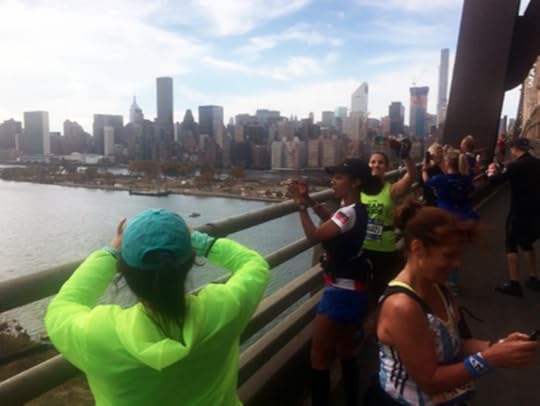
New York City Marathon Course in Pictures
After Brooklyn, you'll run through a small section of Queens. But you'll leave Queens soon after on the Queensboro Bridge and head into Manhattan. There's no better place to take a picture of the New York City skyline. Photo: Steve Godwin
View Larger Image
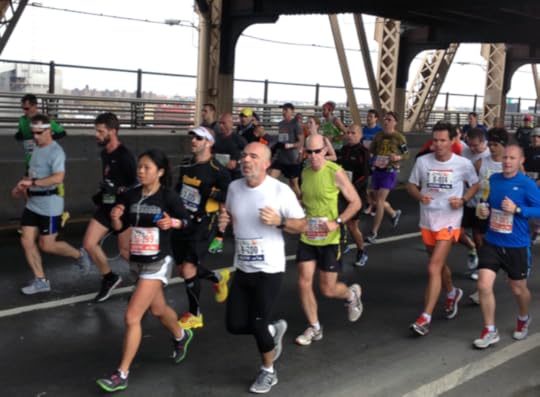
New York City Marathon Course in Pictures
The only place on the course that is mostly quiet—except for the constant hum of runners' footsteps and breathing patterns—is while running over the 3,700-foot Queensboro Bridge. Like the Verrazano-Narrows Bridge, there are no spectators along the course there. But by the time runners get to the Queensboro Bridge, the hootin' and hollerin' has all but ceased as runners approach Mile 16. Photo: Brian Metzler
View Larger Image
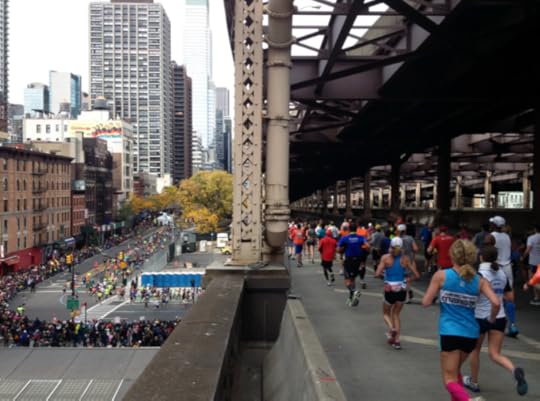
New York City Marathon Course in Pictures
Near the end of the Queensboro Bridge, the silence gives way to a crescendo of roaring spectators along First Avenue. It's a sensory overload, but it can be a welcomed emotional lift as you enter Manhattan with 10 miles still to run. Photo: Brian Metzler
View Larger Image

New York City Marathon Course in Pictures
Runners are supported by an amazing array of fans during the 3.5-mile straightway section down First Avenue. Photo: PhotoRun.net
View Larger Image
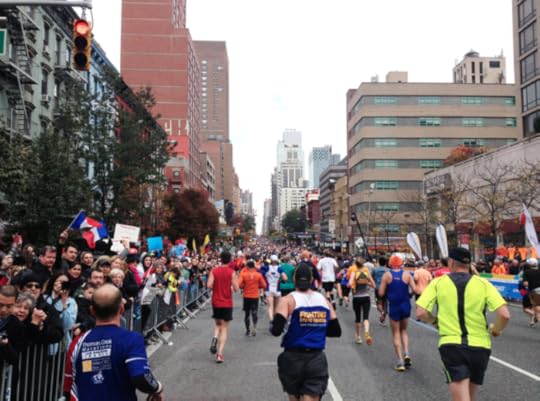
New York City Marathon Course in Pictures
Starting near the 16-mile mark, the section of the course down First Avenue is where reality sets in for a lot of runners. However, the non-stop cheering helps get you through the grind. Photo: Michael Proulx
View Larger Image
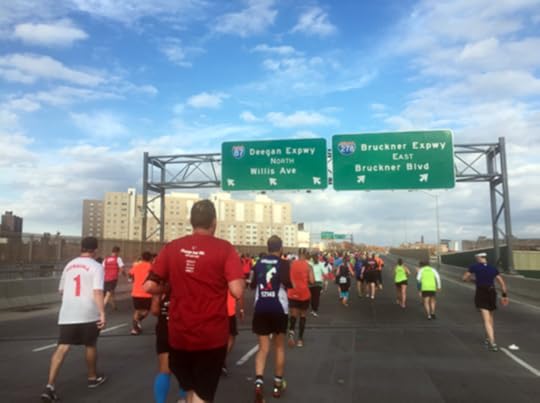
New York City Marathon Course in Pictures
Many runners say that the short section of the course through the Bronx—roughly Mile 19.5 to 21—is the hardest section on the course.
View Larger Image
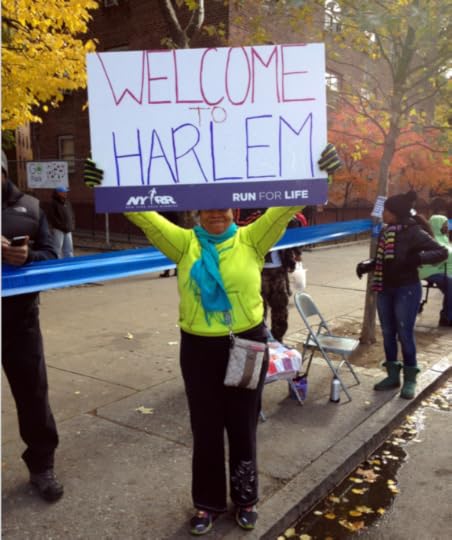
New York City Marathon Course in Pictures
Harlem isn't a borough, but you'll get a good amount of support from this large neighborhood near Mile 21 at the north end of Manhattan on your way to Central Park. Photo: Brian Metzler
View Larger Image

New York City Marathon Course in Pictures
The spectators who come out to support runners along the closing miles of the New York City Marathon in Central Park provide a huge lift, both with non-stop cheering and funny signs. Photo: Brian Metzler
View Larger Image
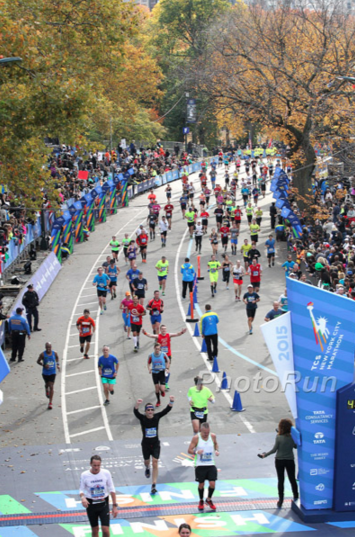
New York City Marathon Course in Pictures
After 3 miles in Central Park and a short stint on 59th Street (Central Park South), runners turn the corner at Columbus Circle and re-enter the park for the final 600-meter approach to the finish line. Photo: PhotoRun.net
View Larger Image

New York City Marathon Course in Pictures
Ah, the finish line! Little compares with finishing the New York City Marathon. That's when the excitement of running the point-to-point course through all five boroughs starts to sink in, no matter if you've been there before of if you've just scratched it off the bucket list. Photo: Sarah Swiss
View Larger Image
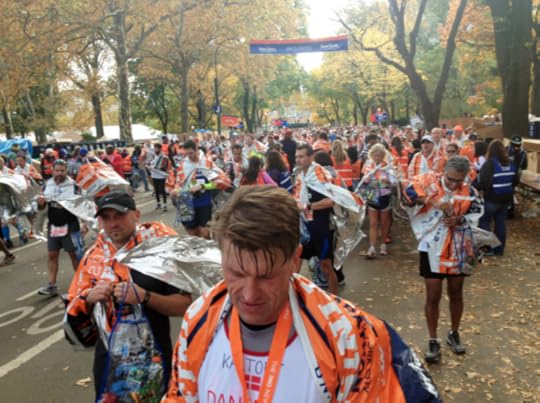
New York City Marathon Course in Pictures
After runners get their finisher medals and space blankets, there's a short walk to the drop bag area. Photo: Brian Metzler
View Larger Image
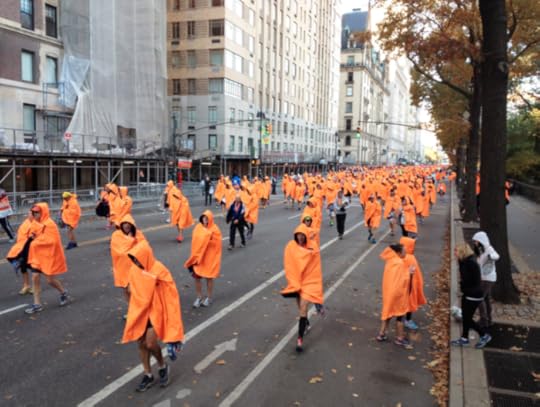
New York City Marathon Course in Pictures
Although it looks and feels like a march of zombies, these are marathon finishers decked out in the special ASICS finisher jackets walking along Central Park West on the way back to their hotels or to meet up with family and friends. Photo: Michael Proulx

More Galleries
The post A Glimpse Inside the NYC Marathon Course in 26 Pictures appeared first on Competitor.com.
How to Watch the 2016 New York City Marathon
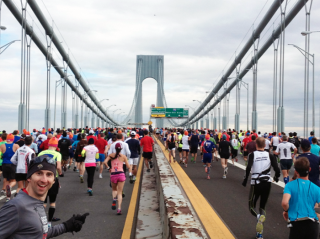
Photo: Brian Metzler
Even if you’re not in New York City to catch all of the marathon action this weekend, there are several resources to watch the entire race from to start to finish—as well as some pre-race coverage. Wherever you are on Nov. 6, here’s how you can tune into the race live and track runners in real-time whether it’s through TV, on the web, or by phone.
On TV
From 9 a.m. to 12 p.m. EST on Sunday, Nov. 6, live coverage of the race will be broadcasted on ESPN2.
For those living in the New York tri-state area, tune into local WABC-TV, Channel 7 from 9 a.m. to 2 p.m. EST to catch the live race broadcast. Live pre-race coverage will start from 7 a.m. EST, and on Friday, Nov. 4, from 5:30 to 6:30 p.m. EST, and Saturday, Nov. 5, from 7:30 to 8 p.m. EST, WABC-TV will also feature special coverage of additional race-weekend events.
On the Web
In the NYC-area, you can watch the race on ABC7NY.com from 7 a.m. to 2 p.m. EST. The rest of the country (and for those who have video subscriptions from affiliated providers) can tune into WatchESPN from 9 a.m. to 12:30 p.m. Additional race coverage will also be streaming live on ESPN3 from 7 a.m. to 9 a.m. and 12:30 p.m. to 2 p.m., as well as a view of the finish line from 9:30 a.m. to 5 p.m. EST.
On Mobile
Download either the WatchABC (for New York residents) or WatchESPN (for national audiences) through the App Store or Google Play Store for Free, and be able to catch all the action on your smartphone and/or tablet.
On Twitter
We’ll be live-tweeting from the race on @runcompetitor. Follow us for the latest race day updates.
Tracking Runners
Know someone (or maybe several people) running this year’s NYC Marathon? You can track up to 20 runners, and stay up to date on the latest race-week and race-day events, by downloading the 2016 TCS New York City Marathon mobile app. Or use Live Results through the NYRR site to track up to 15 runners on race day.
The post How to Watch the 2016 New York City Marathon appeared first on Competitor.com.
October 31, 2016
Run, Swim, Repeat: SwimRun Racing Debuts in the U.S.

If you want to shake up your racing and fitness game, check out the latest trend to hit the U.S.—SwimRun racing. Started in Sweden in 2002 allegedly as a drunken bet to see who could run and swim across 20 islands the fastest, the sport combines multiple segments of cross-country running and open-water swimming. The first official race was held in Sweden in 2006 (ÖTILLÖ, now the World Championship event with Pippa Middleton having finished the 47-mile course in 2015). Now 10 years later, there are about 100 races in Europe, and it’s jumped the pond to the U.S., with races in Maine, North Carolina and California.
The concept includes teams of two (for safety and camaraderie) racing together and carrying all the gear they need for the duration of the event. Course segments and distances are determined by natural features, with some courses, like the 12K sprint California SwimRun this past Saturday in San Diego, being relatively flat and straightforward. Others have more technical elements, like SwimRun NC, held on Sunday in Hanging Rock, N.C., which included about 2 miles of swimming mixed in with 14 miles of trail running that also included 2,300 feet of elevation gain and some waterfall scrambling to up the challenge. Scroll through the gallery below to see images from the inaugural SwimRun NC event.
Photo Gallery
1 of {count}
Back to Start
View Larger Image
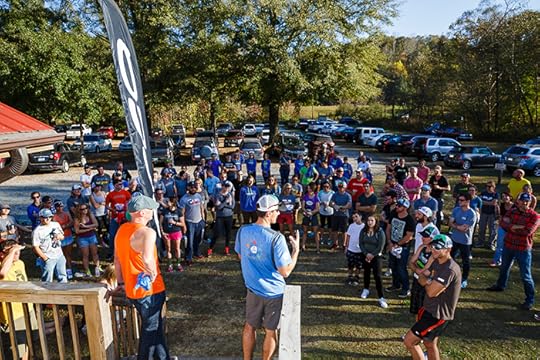
A field of 52 two-person teams gathered for the pre-race meeting on Sunday morning. SwimRun NC included 14 miles of running and 3K of swimming broken up into 11 runs and 9 swims. Teams could be male, female or mixed. Photo: Brian Fancher Photography/SwimRun NC
View Larger Image
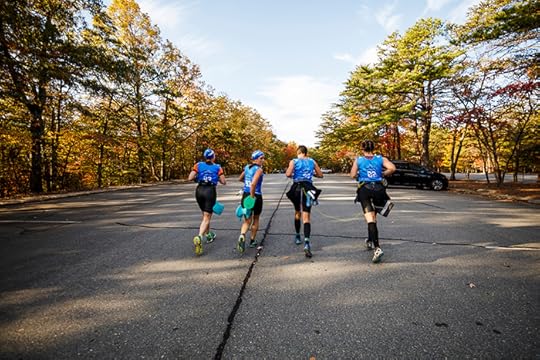
The race is billed as being for “very experienced and fit endurance athletes.” To ensure entrants were prepared, potential participants had to submit a “resume of athletic highlights” from the last two years. According to Herbert Krabel, one of the event organizers, competitors consisted of a mix of triathletes, ultrarunners, swimmers, water polo players and ski mountaineers. Most either had trail running experience or had completed a 70.3 triathlon. Photo: Brian Fancher Photography/SwimRun NC
View Larger Image
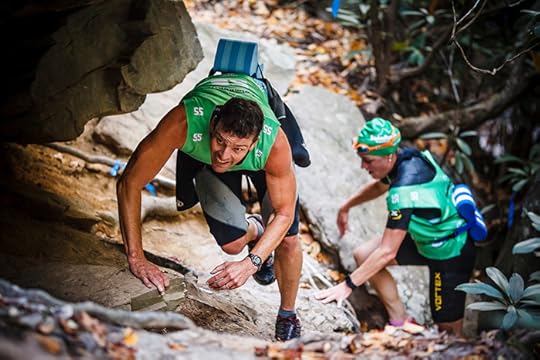
Mandatory equipment for every athlete included wetsuits, a waterproof map holder, a first aid kit and a whistle. As optional equipment, teams could also use swim paddles and pull buoys, but they had to be carried for the duration of the race. Photo: Brian Fancher Photography/SwimRun NC
View Larger Image

Even when racers weren’t swimming, they were getting wet with multiple waterfall crossings as well as some waterfall scrambling. Trail shoes are the most popular footwear choice. Photo: Brian Fancher Photography/SwimRun NC
View Larger Image
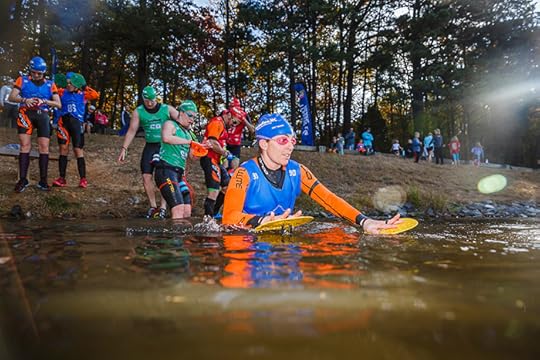
As an additional safety precaution, competitors had to wear race-provided swim caps for each swim section. To save time, racers generally wore their shoes for the swim segments. Photo: Brian Fancher Photography/SwimRun NC
View Larger Image

Teammates could be no further than 10 meters apart (or about 30-35 feet) at any point during the race, including during the swim. Photo: Brian Fancher Photography/SwimRun NC
View Larger Image

Tethers, no greater than 12-feet in length, were allowed as optional equipment. Photo: Brian Fancher Photography/SwimRun NC
View Larger Image

Rocks, roots, warm temperatures and thick underbrush added to the challenges of the course. An impressive 50 teams finished, with total times ranging from 3:15:23 to 5:58:25. The overall winners were The overall winners were Daniel Kaspberg and Daniel Lloyd, of Team Danwich from the U.S. Naval Academy in Annapolis, Maryland. Photo: Brian Fancher Photography/SwimRun NC

More Galleries
The post Run, Swim, Repeat: SwimRun Racing Debuts in the U.S. appeared first on Competitor.com.
October 30, 2016
Photos: 2016 Rock ‘n’ Roll Los Angeles Half Marathon
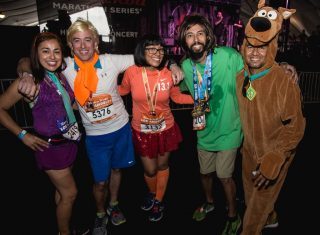
Photo Gallery
1 of {count}
Back to Start
View Larger Image
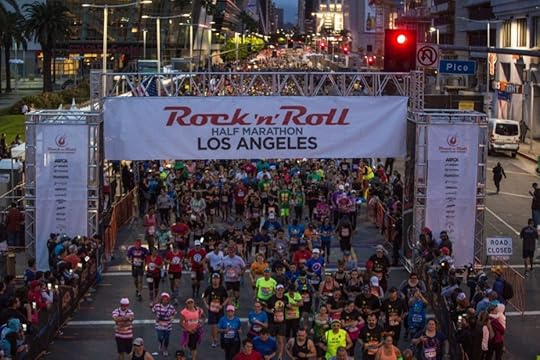
2016 Rock 'n' Roll Los Angeles Half Marathon
View Larger Image
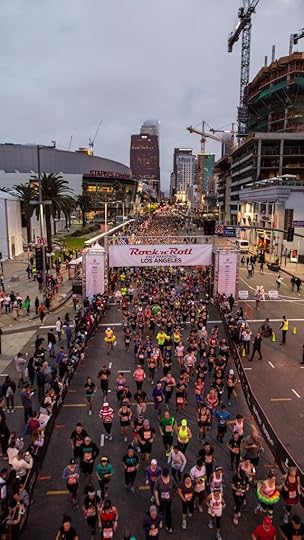
2016 Rock 'n' Roll Los Angeles Half Marathon
View Larger Image
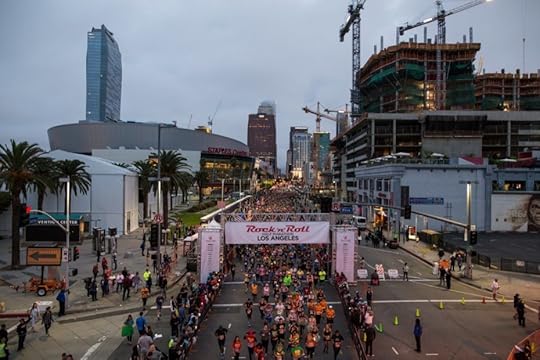
2016 Rock 'n' Roll Los Angeles Half Marathon
View Larger Image
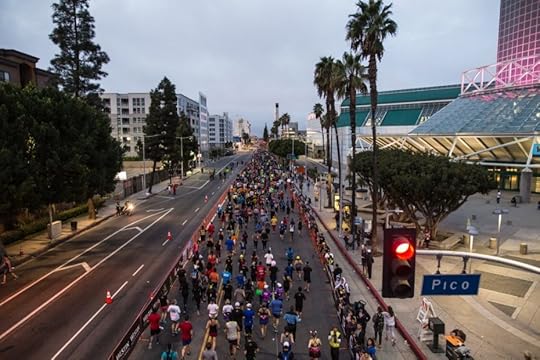
2016 Rock 'n' Roll Los Angeles Half Marathon
View Larger Image
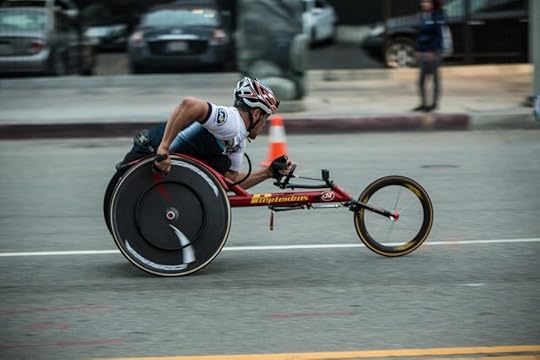
2016 Rock 'n' Roll Los Angeles Half Marathon
View Larger Image

2016 Rock 'n' Roll Los Angeles Half Marathon
View Larger Image

2016 Rock 'n' Roll Los Angeles Half Marathon
View Larger Image
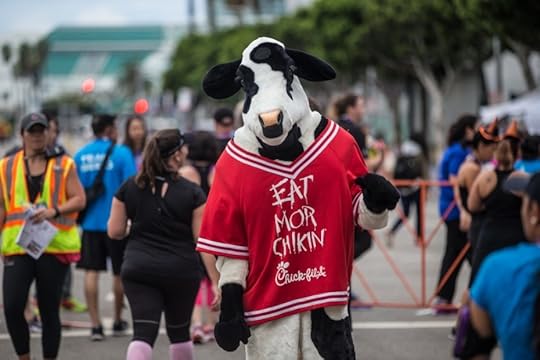
2016 Rock 'n' Roll Los Angeles Half Marathon
View Larger Image
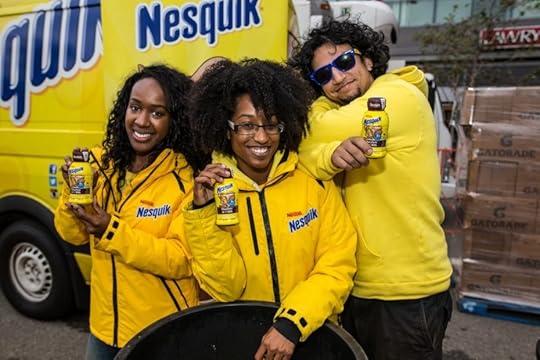
2016 Rock 'n' Roll Los Angeles Half Marathon
View Larger Image
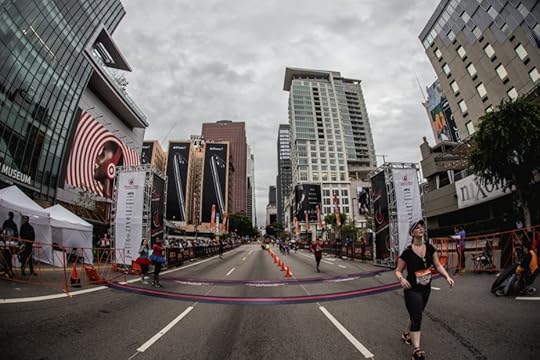
2016 Rock 'n' Roll Los Angeles Half Marathon
View Larger Image
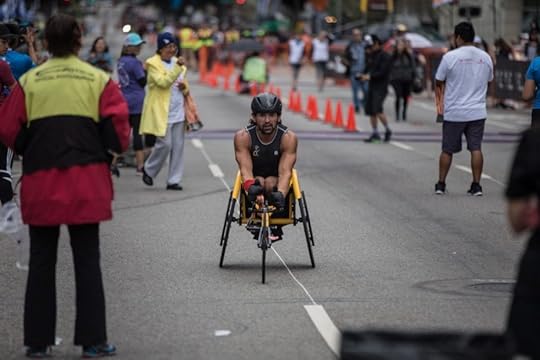
2016 Rock 'n' Roll Los Angeles Half Marathon
View Larger Image
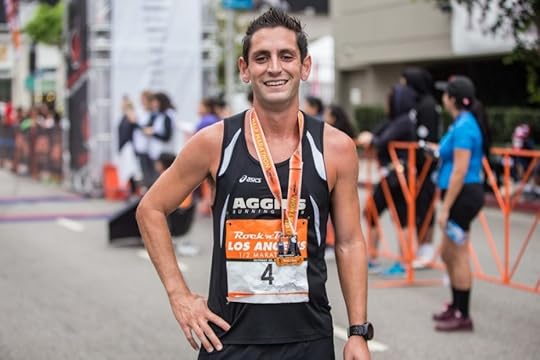
2016 Rock 'n' Roll Los Angeles Half Marathon
View Larger Image
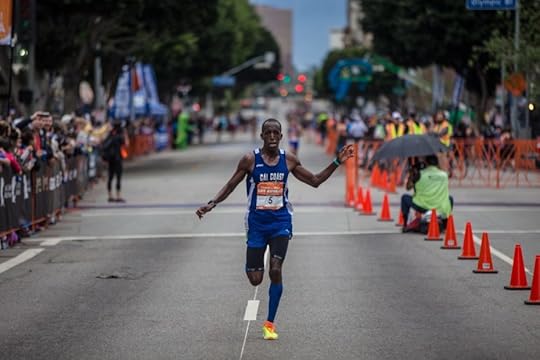
2016 Rock 'n' Roll Los Angeles Half Marathon
View Larger Image
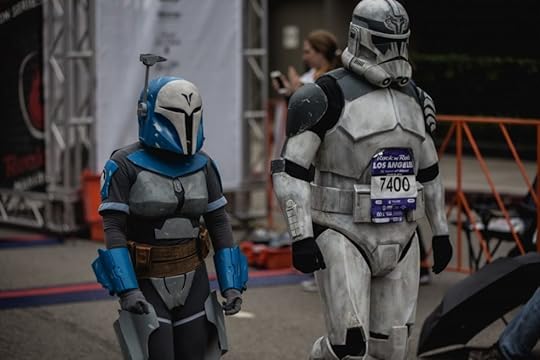
2016 Rock 'n' Roll Los Angeles Half Marathon
View Larger Image
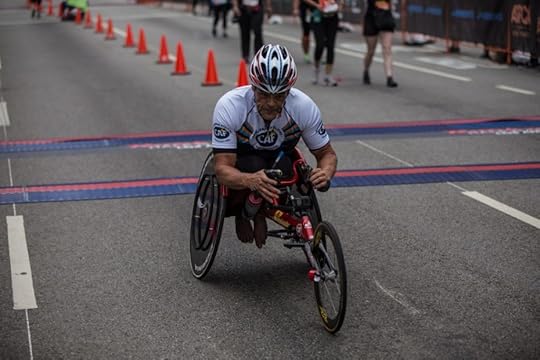
2016 Rock 'n' Roll Los Angeles Half Marathon
View Larger Image
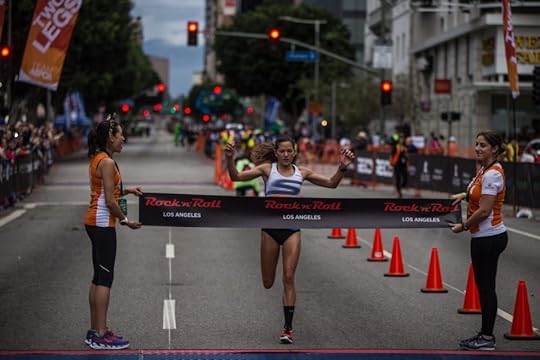
2016 Rock 'n' Roll Los Angeles Half Marathon
View Larger Image
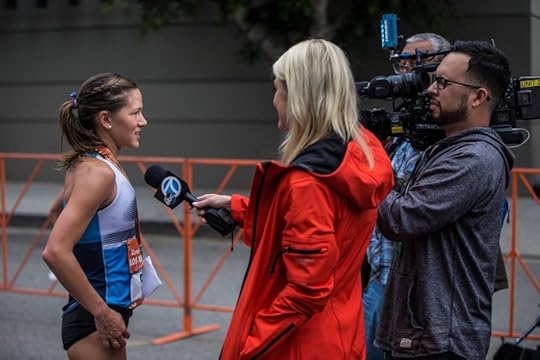
2016 Rock 'n' Roll Los Angeles Half Marathon
View Larger Image
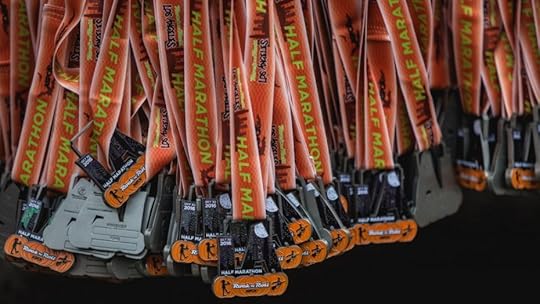
2016 Rock 'n' Roll Los Angeles Half Marathon
View Larger Image

2016 Rock 'n' Roll Los Angeles Half Marathon
View Larger Image
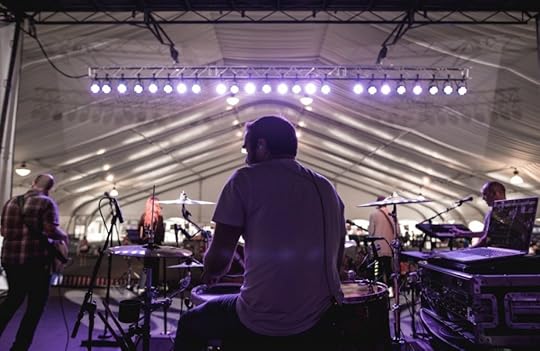
2016 Rock 'n' Roll Los Angeles Half Marathon
View Larger Image
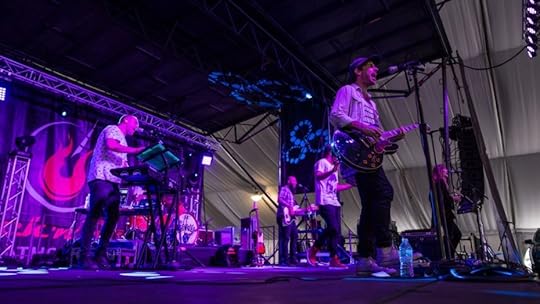
2016 Rock 'n' Roll Los Angeles Half Marathon
View Larger Image
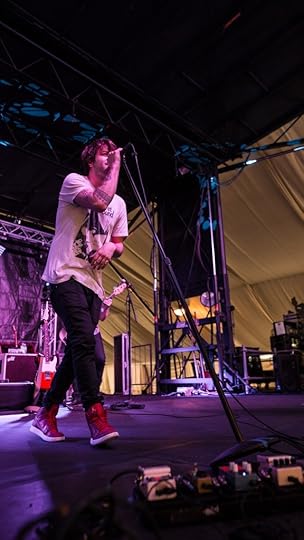
2016 Rock 'n' Roll Los Angeles Half Marathon
View Larger Image

2016 Rock 'n' Roll Los Angeles Half Marathon
View Larger Image
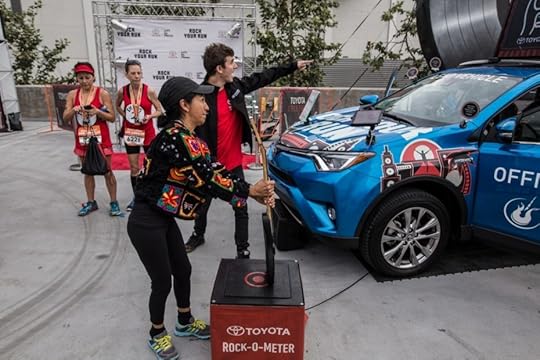
2016 Rock 'n' Roll Los Angeles Half Marathon
View Larger Image
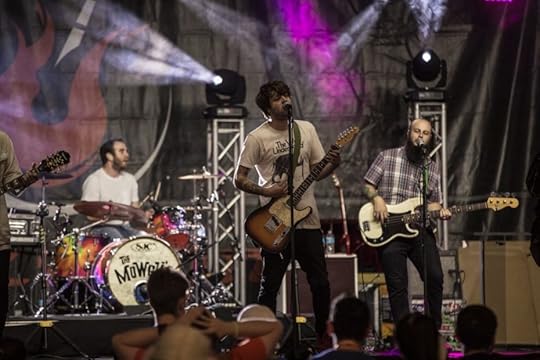
2016 Rock 'n' Roll Los Angeles Half Marathon
View Larger Image
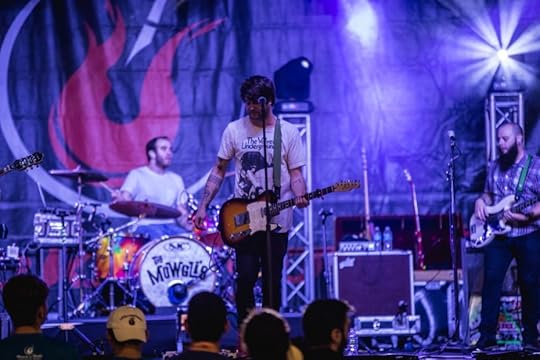
2016 Rock 'n' Roll Los Angeles Half Marathon
View Larger Image
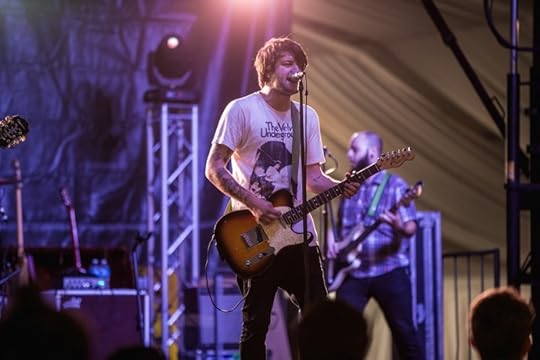
2016 Rock 'n' Roll Los Angeles Half Marathon
View Larger Image
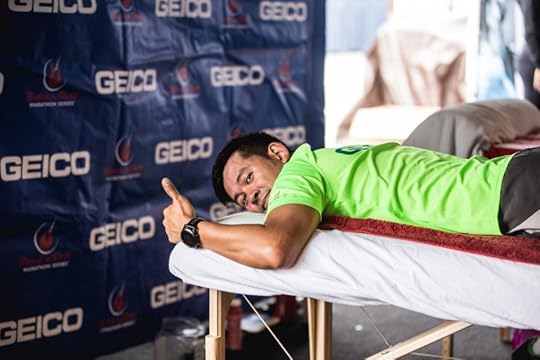
2016 Rock 'n' Roll Los Angeles Half Marathon
View Larger Image
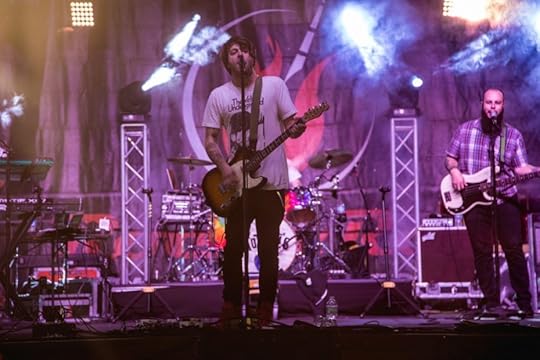
2016 Rock 'n' Roll Los Angeles Half Marathon
View Larger Image
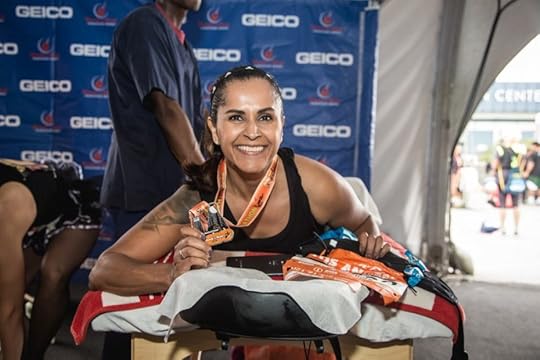
2016 Rock 'n' Roll Los Angeles Half Marathon
View Larger Image
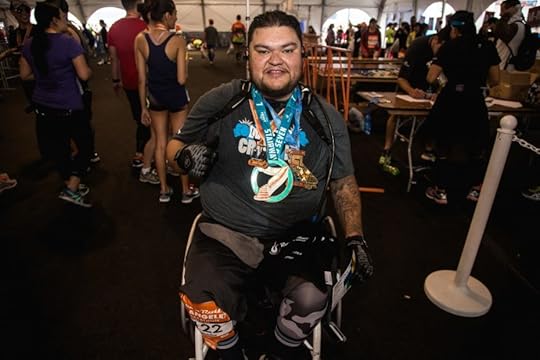
2016 Rock 'n' Roll Los Angeles Half Marathon
View Larger Image
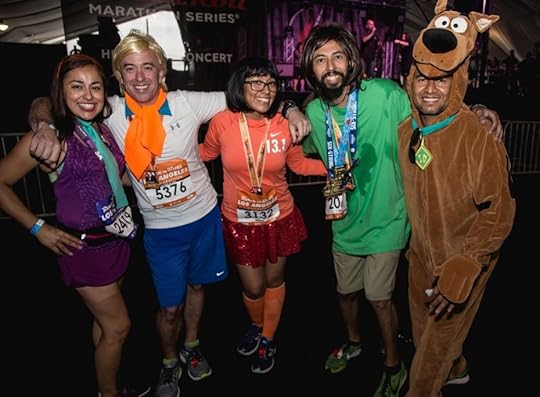
2016 Rock 'n' Roll Los Angeles Half Marathon
View Larger Image
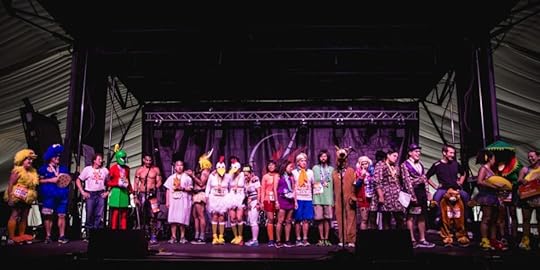
2016 Rock 'n' Roll Los Angeles Half Marathon
Related Galleries

Photos: Runners Rock Rock ‘n’ Roll Oasis Vancouver Half Marathon
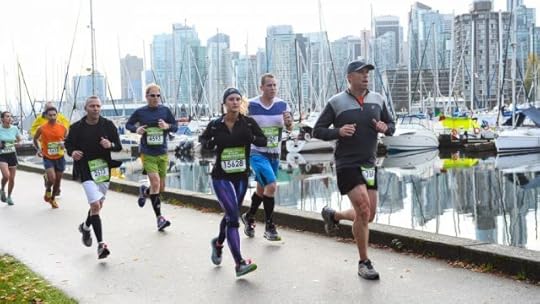
Photos: 46th Annual Cunningham Seawall 10K

Photos: Rock ‘n’ Roll St. Louis Half Marathon & 10K
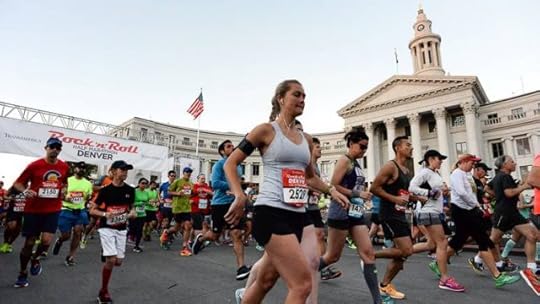
Photos: Transamerica Rock ‘n’ Roll Denver Half Marathon & 10K

More Galleries
The post Photos: 2016 Rock ‘n’ Roll Los Angeles Half Marathon appeared first on Competitor.com.
October 28, 2016
Test Run: Apple Watch Nike+ Edition
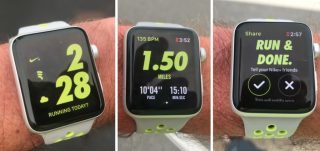
The new running-oriented Nike+ version of the Apple Watch hit stores on Oct. 28 for $369-$399, depending on size. Photos: Sam Winebaum
The Nike+ edition of the Apple Watch Series 2 launched Oct. 28 and we took one out for some test runs.
We had seen many pictures of the bold Nike Volt band highlights, watch faces and workout screens, played with the non-Nike version, and studied the improvements over the first Apple Watch. As much as we knew a lot about what the Nike version would included, there is nothing like having one on the wrist and testing it on the run.
The addition of GPS to the watch, full waterproofing and a sophisticated swim app, a screen that’s twice as bright and a faster processor have all been in the news. The Apple Watch Nike+ and all Series 2 Apple Watches now track runs phone-free and, via the on board music player, keep your tunes playing. In addition to the Nike+ features covered here, there are literally thousands of other watch apps and everyday utility features built into the watch and they perform significantly better than in the original Apple Watch. The Nike+ edition is priced the same as other comparable Series 2 watches.
Some of the differences between the Nike+ version of the Apple Watch and other Apple Watches are exclusive color coordinated Nike+ sport-focused bands and Nike+ watches faces with direct access to the onboard Nike+Run Club app. These digital and analog Nike+ watch faces, and they are bold, prominently use Nike’s signature Volt yellow. The Nike watch faces also give you one-touch access to the weather and your overall activity. These on-the-face features are known in watch speak as “complications.” They can be swapped out for others made available by other apps on your watch or Apple’s own via the phone app. I swapped the activity complication for the vital battery life indicator. The Apple Watch will only get you through about 5 hours of running without the phone connected or 18 hours in typical daily use. Some of Apple’s stock watch faces also include Volt yellow highlights, for example, a Volt second hand over a black background and white digits watch face.
Deeper into the plumbing of the new Watch OS3, I was happy to see that app developers, including Nike, now have far deeper access to the OS so as they can customize features and draw in data from other sources. So, for example, one of the the Nike+Run Club app screens “When Are You Running?” had us a bit perplexed as to its utility before trying the watch. It lets you schedule runs by time of day but also shows a snapshot of the expected temperature and weather for that time. We were told the data is from Dark Sky, a weather app that fine tunes forecasts to a very local level.
Our first surprise was how comfortable the exclusive Nike band is—far more comfortable than the original Apple Watch sports band, even though it is made of the same material. The band is compression molded compound of two colors. In our test watch, the inner band is Volt Yellow, the outer band Flat Silver and the case Silver Aluminum. There are three other Nike exclusive combinations of band and case. Softer, more pliable and stretchy than the original’s Sport Band (with plenty of holes for breathability and weight reduction), the band balances a secure hold on the wrist with comfort. A secure, light-free seal is essential for reliable wrist heart rate readings. The Nike+ band is much easier than the old Sport Band to put on and then cinch tight enough, without discomfort, to get that seal. A shorter band is included for smaller wrists. While not a heavy watch by any means, it somehow feels lighter, more as one with the wrist, not noticed than with the earlier Apple Watch, or for that matter other sport watches.
So what about the heart rate monitor during our first run? It was pretty good, but with a high reading initially—although that’s not unusual in cool weather especially at the start of runs. We shifted it to the other wrist, dominant side, which is a bit thicker and got a more consistent reading, although with a delay before it started displaying. More testing is in order before any real critiques can be made. Our usually very reliable Garmin Fenix went over to the other wrist and promptly also had high readings for a while. You will only see in-run heart rate if you select “Advanced Mode” in the Nike+Run Club app. It is not displayed in the default workout screen even though it is still recorded.
Other stats in Advanced are distance, elapsed time, time of day and current pace. The non-advanced default workout screen has three metrics, again on one screen: distance, elapsed time and time of day. Turning while lightly pressing the digital crown changes the big font Volt metric for one of the others on the screen. In a very cool feature, and without a phone, the watch will call out at each mile, to its speaker or to Bluetooth earphones, your average pace for the run, distance, and time. The speaker was surprisingly easy to hear. There is an auto-pause option, always a must. You can just start running or set an initial target for time, distance, or speed (but it requires phone). When the run is paused, the screen will show you distance, average pace, time, heart rate, and even where you are on a map, this last feature assuming you carry a phone. Swipe left to access to music controls and swipe right to manually pause and then via two taps to end the workout.
GPS acquisition was eerily quick, I think, but beyond a 1,2,3… countdown there is nothing to tell you are actually locked in. Distance on my first run along the ocean over open, flat terrain with few trees matched the Garmin Fenix HR almost exactly. Trail accuracy is to be determined with more testing. Screen visibility on an overcast day was excellent. The use of Volt yellow on black background creates high contrast. While two times brighter than the original Apple Watch, which was terrible in bright sunlight, we also want to evaluate how the Nike+ version performs in bright conditions.
At first glance data-focused, “serious” runners may say: “That’s it, only one screen of data? “With the exception of not having average pace displayed live (recall though it is called out at every mile), the basics are all there for me and given the nature of the platform surely can be evolved. I could see using the same approach as for customizing watch face complications to allow runners to customize their workout screen with preferred and additional data fields beyond what is offered now. The data is surely available and crunchable as the Apple Watch has an incredibly powerful processor. And a second screen of data is not too much to ask for as an option.
Nike’s slogan for the app and watch is “Are We Running Today?” Closely tied to the iPhone Nike+Run Club app, the watch Run Club app is heavy on inspiration and motivation. It will get you out there on those dark cold winter mornings! You can match your last run on your next one. If you are in a Nike+Run Club training plan, it will remind you what your next run is. If you are in a group leader board it will prompt you to run a few more miles to pass a friend. There is sharing of workouts directly from the watch and more.
The Apple Watch Nike+ goes far beyond a conventional GPS watch or even a GPS “smart watch” in its utility and bold style. Beyond the run, and with your phone nearby, you can answer calls from your wrist, see and feel driving directions, dictate a message, ask Siri for help, tell her to play music or to call someone. There is a full suite of activity monitoring as well as a new and very relaxing Breathe app. Thousands of other apps, including other running apps, are available. The original Apple Watch was hobbled by no GPS, slow response, limited integration of apps to the OS and to each other, not to mention a so-so screen for outdoor use. While not perfect, yet, the Apple Watch Series 2 and its Nike+ version significantly ups running and overall utility as a do-just-about-anything running watch and all-day wrist companion.
The post Test Run: Apple Watch Nike+ Edition appeared first on Competitor.com.
October 27, 2016
84-Year-Old Who Has Done 55 Marathons to Run in Rock ‘n’ Roll LA Half
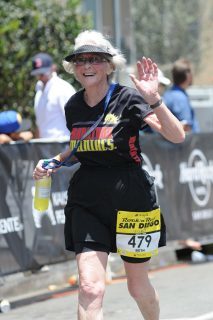
Beth Petersen admits she’s aging a bit, occasionally dozing off when watching her favorite TV shows. “I am slowing down,” Petersen says.
Back in the day she completed seven marathons in one year. More than once she knocked off a half marathon on Saturday, then capped the weekend with a 26.2-miler on Sunday.
But her marathon mania has been limited to just one in each during the past two years. It’s understandable that Petersen doesn’t crank out the long stuff like she once did. The womn from Glendale, Calif., is after all 84 years young.
Petersen is the oldest of the 81 Rock ‘n’ Roll San Diego Marathon legacy runners, the 50 men and 31 women who have completed the race every year since its 1998 inception. And she’ll be there come June 4, 2017 for the 20th edition of the race that changed the road-racing landscape.
“I have to,” Petersen says, the verve in her voice as sprite as the spring in her step. “I’m a legacy runner.”
Petersen, who has walked all 55 of her lifetime marathons, will also step to the starting line for the Rock ‘n’ Roll Los Angeles Half Marathon on Oct. 30.
Even more fascinating is that Petersen didn’t walk her first marathon until she was 56 years old. She has compiled her road-racing milestones despite being diagnosed with emphysema caused by second-hand smoke, asthma and battling chronic bronchitis.
Petersen’s 63-year-old son, Randy says, “She’s always been tough. She’s always had drive.”
Petersen was born on Sept. 21, 1932 during the height of the Great Depression. She was raised in Sedro-Woolley, Wash., a small town 72 miles northeast of Seattle. She attended a private elementary school that was so small all the students met in one room. Her family lived on a 120-acre cattle farm and owned another 200 acres across town that was used for cattle grazing.
Petersen wasn’t athletic as a child, passing on P.E. in high school.
“I heard you had to take showers and change clothes. I was too embarrassed to do that,” she recalls. “I didn’t know how to take a shower. We didn’t have one at home. We just had a tub.”
The genesis of her walking career dates back to 1984. She and her husband of 25 years had divorced two years earlier. Meanwhile, a new member of her church started a running group.
“Having gone through the divorce, my mind was a little cloudy,” Petersen says. “I thought, ‘Maybe I should join that.’”
She did and quickly found out she couldn’t run. A medical transcriptionist, she had inhaled smoke for years courtesy of a doctor who lit up Pall Malls.
But the man who started the church running group encouraged her to walk. So she did, never dreaming marathons were in her future.
“As they say,” says Petersen’s 51-year-old son, Gary, “the longest journey begins with a single step.”
About two years after joining the church’s running entourage, Petersen traveled with a group of runners to Hawaii for the Honolulu Marathon. Having never been to Hawaii, she planned to enjoy a vacation while hanging with friends.
“That’s when I discovered people walked the marathon,” she says. “When I was looking out my window from the hotel, I saw people walking and said, ‘Well, I can do that.’”
Come 1988, she walked the Honolulu Marathon, finishing in more than seven hours.
However, Petersen didn’t complete her next marathon until 1992 because of her chronic battles with bronchitis. In fact, she was hospitalized for 10 days in 1989 with acute respiratory failure and was put on a life-support system for awhile during the stay.
“They were worried about whether she was going to recover,” Randy says. “She was in pretty bad shape.”
Petersen credits a doctor’s care and the use of an inhaler twice a day for turning her health around.
Petersen, who stands 5 feet 4 inches and weighs 117 pounds, has never remarried. Walking not only keeps her body fit, it’s the center of her social calendar. On Monday nights she walks with a group from a Pasadena running store. Fridays are reserved for a group workout at a YMCA. Since 1984, on Sundays she meets walkers with a marathon training program.
She starts almost every day with a 4-miler outside her front door at sunrise.
“Then I can get on with all my errands,” says Petersen, who cleans her own home and tends to her yard. She reads three daily newspapers and subscribes to numerous magazines.
Her fastest marathon was 5 hours, 45 minutes. Last year, at 83, she finished Rock ‘n’ Roll San Diego in 6 hours, 43 minutes.
When Petersen showed up for Rock ‘n’ Roll San Diego back in ’98, she planned on being a legacy runner. Never mind that she was 65 years old.
Regarding aging gracefully, Petersen says, “Keep busy, keep a lot of friends, keep social. And I can’t say eat right because I don’t eat right. I have a horrible diet. I eat tons of ice cream and buttered popcorn.”
As for Rock ‘n’ Roll Los Angeles—the music, cheerleaders and costumed aid stations—Petersen gives it two thumbs up. Of the bands, the 84-year-old rocker say, “Oh, they’re good. I always wave at them when I go by.”
The post 84-Year-Old Who Has Done 55 Marathons to Run in Rock ‘n’ Roll LA Half appeared first on Competitor.com.
Fueling Do’s and Don’ts For Your Next Marathon
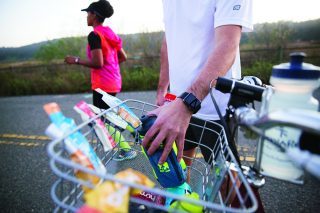
Photo: Scott Draper
Running a successful marathon is undoubtedly challenging. At 26.2 miles, there’s more opportunity for problems to undermine the outcome of the race.
And one area that sets the marathon apart from shorter races is fueling. The human body only stores enough carbohydrate in the muscles, blood, and liver (in the form of glycogen) for roughly 20 miles of running, especially at more strenuous intensities.
Run out of fuel and the inevitable crash or bonk happens. Any marathoner who has “hit the wall” around mile 20 of a marathon will attest to the pervasive fatigue and dead-leggedness that follows. Slowing down is physiologically necessary to conserve the rapidly diminishing fuel stores that power a marathon performance.
The solution? First, proper marathon training is essential to teach your body to conserve fuel and use it wisely. Next, a combination of carb-loading before and during the race will boost carbohydrate stores and available fuel to help you finish the marathon strong.
Follow these do’s and don’ts of marathon fueling to help your next marathon be your best.
RELATED: Marathon Fueling Made Simple
Do carb-load before the race
Carb-loading works. In an interesting study published in the International Journal of Sports Medicine, researchers followed over 250 runners who competed at the London Marathon. They found that only 12 percent consumed enough carbohydrates before the race—and those that did ran an average of 13.4 percent faster!
The new guidelines suggest 7 to 10 grams of carbohydrates for every kilogram (2.2 pounds) of body weight. This is admittedly more carbohydrates than most runners are used to eating; 1 to 2 liters of sports drink is a helpful way to make eating all those carbs possible.
Take your pre-race fueling seriously. For a 4-hour marathoner, this could mean running more than 25 minutes faster than if you didn’t focus on carb-loading!
RELATED: The New Rules of Marathon Nutrition
Don’t wing it
A runner once told me he was going to rely on adrenaline to get him over the finish line of his first marathon. But that’s a very bad idea!
First, adrenaline is not adequate fuel for an endurance event (it’s for short bursts of high intensity energy, typically in a “fight or flight” situation).
Not having a nutrition plan for race day is like going into an exam without studying. You simply will not be prepared.
Instead, use the tips in this article to put a plan together. And of course, practice it before the race.
RELATED: Tapering Dos and Don’ts for Marathoners
Don’t do anything new on race day
This is a well-worn piece of advice for any runner, no matter the distance. Don’t wear new shoes, shorts, or have different foods for breakfast. And experimenting with new fuels or a different fueling schedule is introducing a potentially disagreeable GI situation!
Stick with foods that are compatible with your stomach both the day before and on race day.
Which leads us to my next point…
Do practice before race day
Just like you practice long runs, pacing, and racing strategy before your goal marathon, you should also practice your exact fueling strategy before the big day. There should never be any surprises when you’re racing.
Aim to run two to three long runs using the same fueling schedule you plan to use on race day. Make sure everything is planned: use the same fuel, at the same time of day, in the same timing pattern that you will on the day you race your marathon.
This helps ensure that there won’t be any surprises when you finally line up to race.
Do consume adequate carbs during the marathon
During the race (and when you’re practicing), it’s essential to eat the right amount of carbohydrates.
Too little and you risk limiting your potential. Too much, and you risk GI distress.
With proper carb-loading before the race, most runners then need about 45 to 60 grams of carbohydrate per hour during a marathon for optimal performance. This works out to be about two gels (or equivalent) per hour.
To supply a steady stream of fuel and to reduce the likelihood of a porta-potty break, break that into two sessions: one gel every 30 minutes during a marathon.
Also be sure to drink roughly 4 ounces of water with each gel. The electrolytes in the gels must be processed with water (and too many electrolytes, if you drink sports drink, can leech water from your cells for that processing, causing dehydration). One or two mouthfuls of water is all you need.
With these strategies, fueling for a marathon becomes simpler. And racing the marathon will be a lot more successful!
RELATED: What Do Marathoners Eat?
The post Fueling Do’s and Don’ts For Your Next Marathon appeared first on Competitor.com.
Ryan Hall's Blog
- Ryan Hall's profile
- 21 followers



